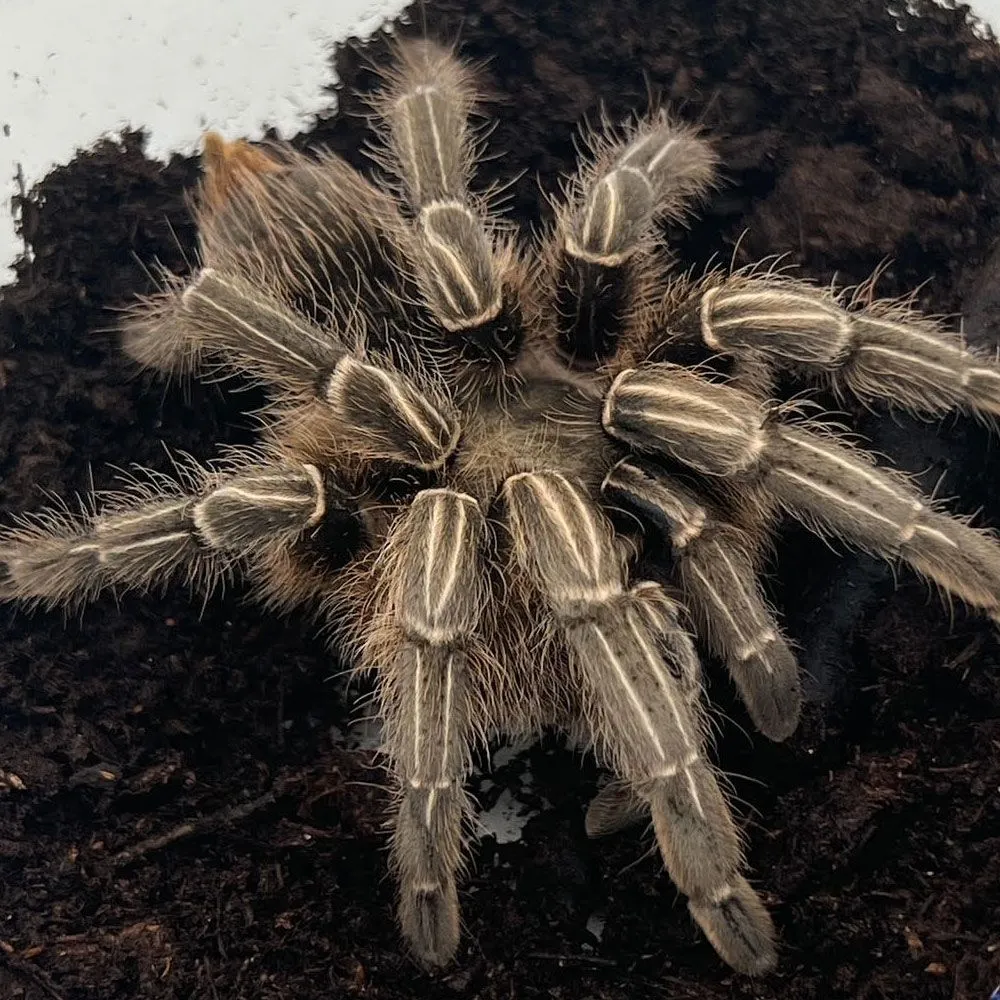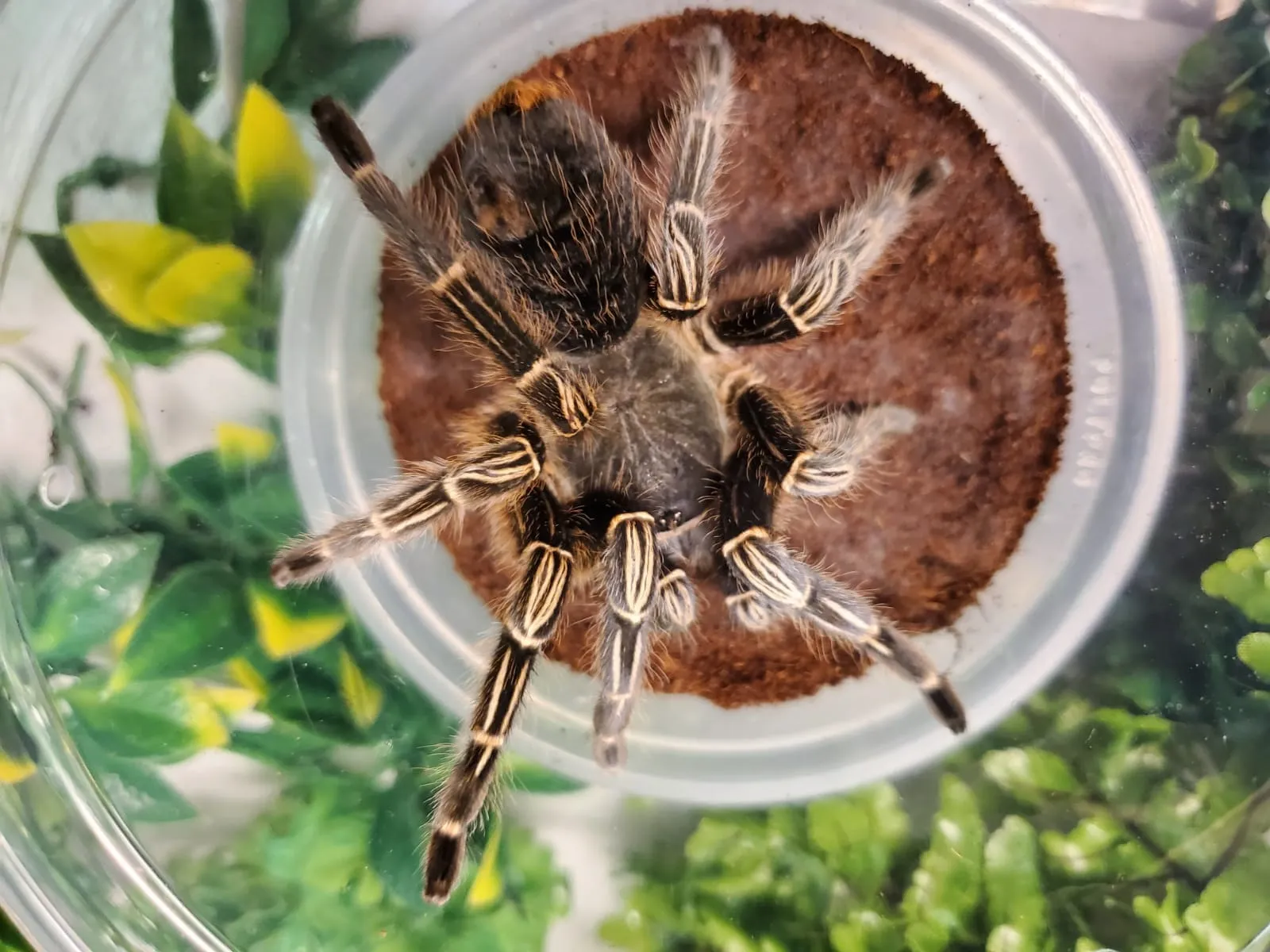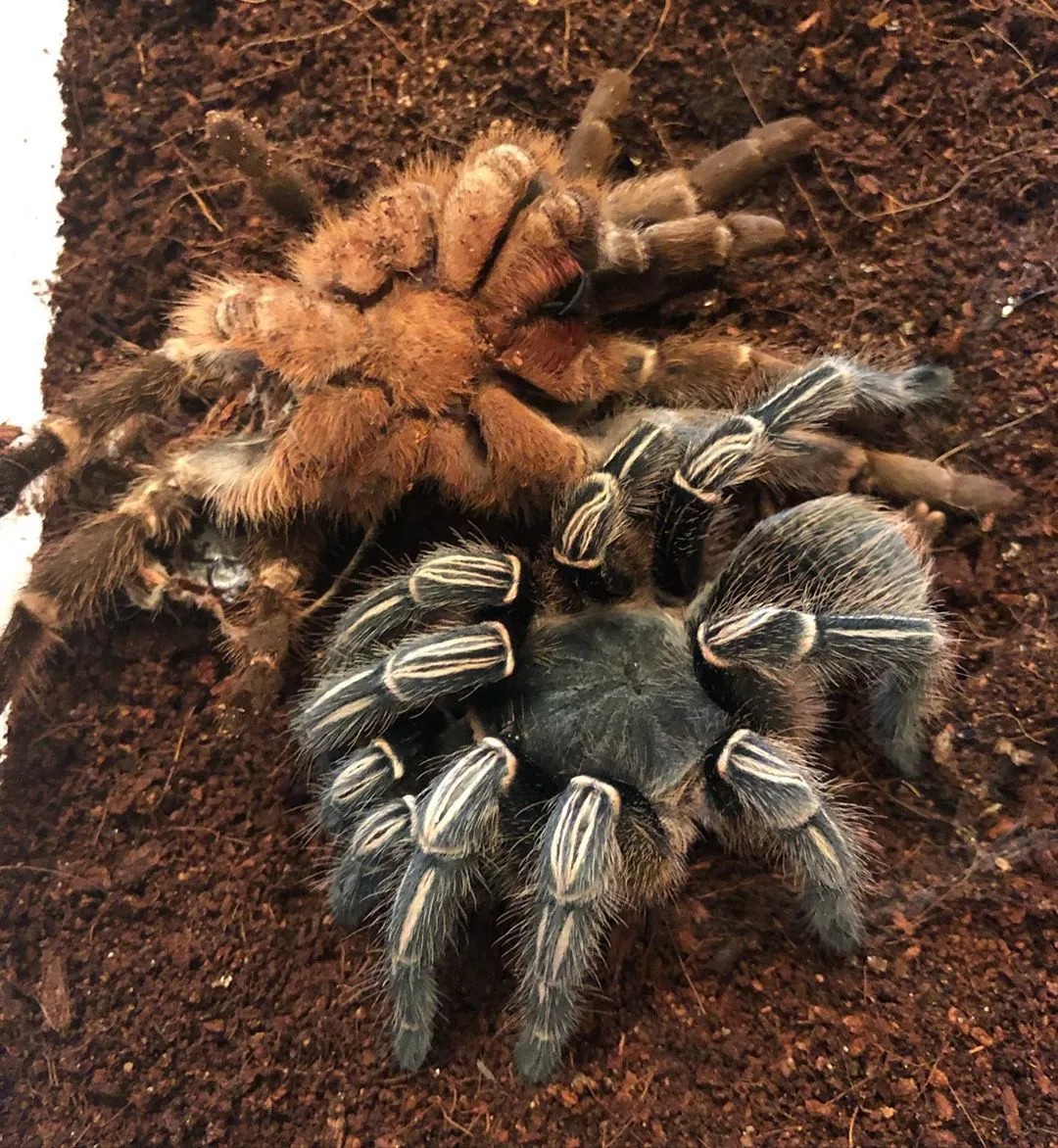What is a Striped Knee Tarantula?
The striped knee tarantula (Aphonopelma seemanni) is a captivating arachnid, admired by many for its striking appearance and relatively docile temperament. Originating from Central America, these spiders are popular in the pet trade. Their namesake comes from the bold, zebra-like stripes adorning their knees and legs. These creatures typically boast a lifespan of up to 10 years for females and a shorter 3-5 years for males. Understanding their basic biology is the first step in addressing concerns about their venom.
Striped Knee Tarantula Venom Effects
Striped knee tarantulas, like all tarantulas, possess venom that they use to subdue their prey. However, the potency of this venom is often exaggerated. The venom primarily contains enzymes and toxins designed to paralyze insects. When it comes to humans, the effects are generally mild. The venom is not considered highly toxic and is typically not life-threatening. The primary effects stem from localized reactions at the bite site.
Common Symptoms after a Bite

If a striped knee tarantula bites a human, the most common symptoms include localized pain, similar to a bee sting. This pain may be accompanied by redness, itching, and swelling around the bite area. Some individuals may experience mild muscle cramps or spasms. Systemic symptoms, such as fever or nausea, are rare but possible. The severity of the symptoms can vary depending on the individual’s sensitivity and the amount of venom injected. Most symptoms subside within a few hours or days.
Severity Factors
Several factors influence the severity of a striped knee tarantula bite. The amount of venom injected during the bite is a key determinant. A ‘dry bite,’ where no venom is injected, might result in minimal or no symptoms. The individual’s sensitivity to the venom also plays a role. Allergic reactions, though rare, can exacerbate symptoms. The bite location may also influence severity; bites on sensitive areas like the face or neck might be more painful. Overall, the risks are generally low for healthy adults.
Is a Striped Knee Tarantula Bite Fatal?
Fortunately, fatalities from striped knee tarantula bites are exceedingly rare. The venom is not considered to be highly toxic to humans. While a bite can be unpleasant, the risk of a life-threatening reaction is very low. There are no documented cases of deaths directly attributed to the bite of a striped knee tarantula. It is important to seek medical attention if severe symptoms develop, but typically, the effects are manageable without significant intervention.
Handling Striped Knee Tarantulas

Handling striped knee tarantulas should be approached with caution, as bites can happen if they feel threatened or startled. While they are generally docile, their defensive instincts may kick in. It’s important to handle them as little as possible to minimize the risk. If handling is necessary, do so near a soft surface, such as a bed or a carpeted floor, to prevent injury if the spider falls. Avoid sudden movements and always be aware of the tarantula’s body language.
Safety Measures
Implementing safety measures is crucial when interacting with striped knee tarantulas. Always wash your hands before and after handling the spider or its enclosure to prevent the spread of bacteria. Keep the tarantula’s enclosure secure and out of reach of children and pets. Avoid putting your hands directly into the enclosure, and instead, use tools like long tongs or a paintbrush to move the tarantula if needed. Never surprise or startle the spider, and always be mindful of its environment.
First Aid for Bites
In the event of a striped knee tarantula bite, immediate first aid is important. First, remain calm. Wash the bite area thoroughly with soap and water. Apply a cold compress or ice pack to reduce pain and swelling. Keep the affected limb elevated to minimize swelling. Monitor the individual for any signs of an allergic reaction or severe symptoms, such as difficulty breathing or dizziness. Seek medical attention immediately if concerning symptoms arise.
Medical Treatment

Most striped knee tarantula bites do not require extensive medical treatment. Mild cases can be managed with over-the-counter pain relievers and antihistamines to reduce itching and swelling. In rare cases of allergic reactions, a physician may administer antihistamines or corticosteroids. If a secondary infection develops at the bite site, antibiotics might be necessary. Always consult a healthcare professional for personalized medical advice.
Striped Knee Tarantula’s Diet
The diet of a striped knee tarantula consists primarily of insects, making them natural pest controllers in their habitat. In captivity, they thrive on a diet of crickets, mealworms, and occasionally, small cockroaches. The frequency of feeding depends on the tarantula’s age and size; younger spiders require more frequent meals. Always ensure that the insects offered are pesticide-free and that water is available at all times, either via a shallow dish or a moist substrate.
Understanding the Diet’s Influence
The diet of a striped knee tarantula can indirectly influence their overall health, and potentially, the composition of their venom. A well-balanced diet ensures the spider gets all the necessary nutrients. A healthy spider, in turn, may produce a more effective venom for subduing its prey. However, this impact is minimal in terms of human safety. The primary concern remains the potential for allergic reactions or localized inflammation rather than direct toxicity from the venom itself.
Toxicity Myths Debunked

Numerous myths circulate about the toxicity of tarantula venom, including those regarding striped knee tarantulas. One common misconception is that all tarantulas possess highly dangerous venom. This is untrue; the venom of striped knee tarantulas and many other species is not particularly potent to humans. Another myth suggests that tarantulas can ‘inject’ a large dose of venom. In reality, they typically inject a very small amount. It’s vital to separate fact from fiction when assessing the risks associated with these spiders.
Common Misconceptions
One of the most persistent misconceptions is that all tarantula bites are deadly. As discussed, this is not the case. Another myth is that tarantulas actively hunt humans. These spiders are generally shy and avoid confrontation with larger creatures. The idea that a tarantula bite is always followed by severe allergic reactions is also inaccurate; while reactions can occur, they are not common. It is crucial to understand these misconceptions to have a realistic view of tarantulas.
Facts vs. Fiction
To summarize the facts: striped knee tarantulas are not highly poisonous to humans. Their venom is primarily intended to paralyze insects, and any bite will likely cause mild symptoms. The fiction is that a bite is almost always fatal or that these spiders are aggressive. The reality is that they are often docile and defensive, and bites are rare. Understanding these differences is critical to dispel fear and promote a balanced perspective on striped knee tarantulas.
Striped Knee Tarantula Poisonous? Final Thoughts

In conclusion, the striped knee tarantula is not a highly poisonous creature. While they do possess venom, it is not generally considered dangerous to humans. Bites may cause localized pain and minor swelling, but serious complications are rare. Proper handling, caution, and a good understanding of these spiders can ensure a safe and enjoyable experience for both the tarantula owner and anyone who encounters these fascinating creatures. Always prioritize safety and seek medical attention if needed, but rest assured that the striped knee tarantula is not the terrifying threat some may believe it to be.
